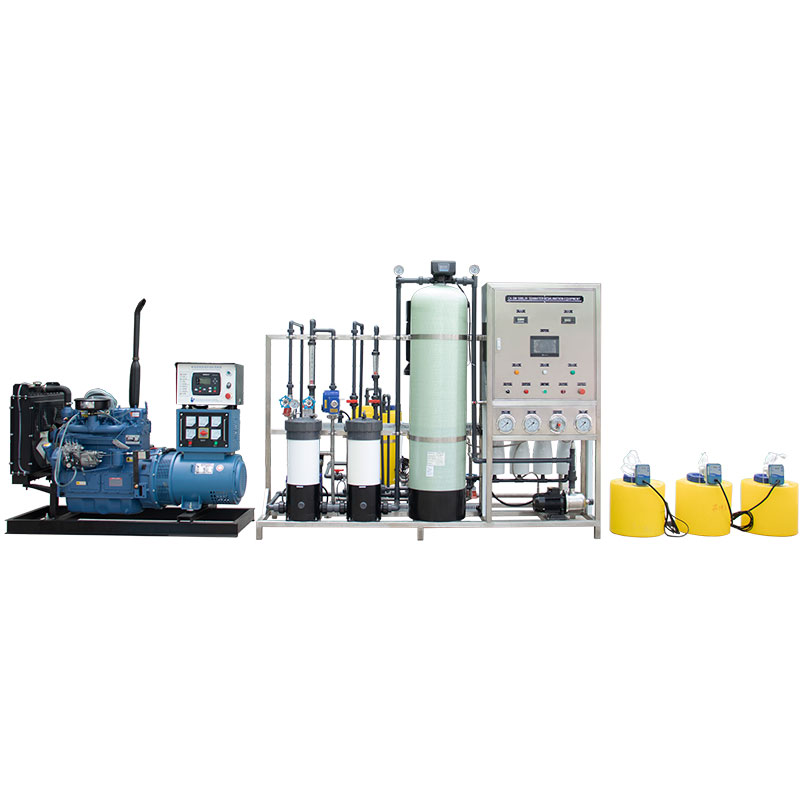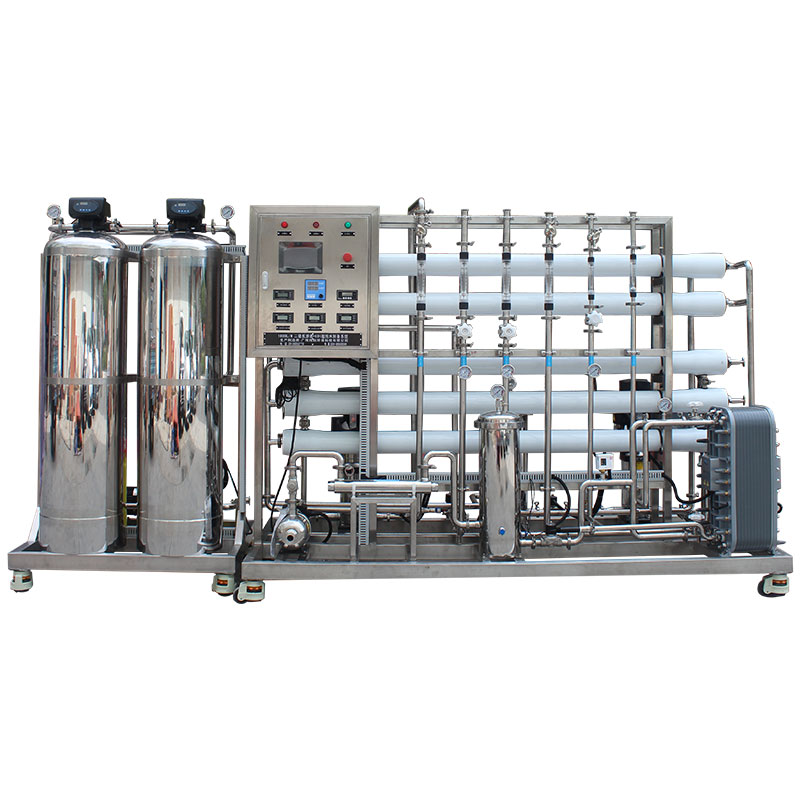What is a water ozone generator? What does an ozone machine do to water?
In the field of modern water treatment, ozone, as a strong oxidant, is widely used in drinking water, wastewater treatment, swimming pool water purification and other fields due to its efficient disinfection and removal of organic pollutants. The water ozone generator is the core equipment for achieving the generation and application of ozone in water.
So, what exactly is a water ozone generator? How does it work? How does ozone play a role in water treatment? This article will explore these issues in detail.

What is a water ozone generator?
As the name suggests, a water ozone generator is a device used to generate ozone and dissolve it in water. Ozone (O₃) is an unstable gas composed of three oxygen atoms. Due to its strong oxidizing properties, it can effectively destroy bacteria, viruses, fungi and other microorganisms in water. At the same time, ozone can also remove odors, discoloration and certain organic pollutants in water.
Composition of a water ozone generator
A typical ozone water machine usually consists of the following main parts:
● Ozone generator: the core part, used to generate ozone. Ozone is usually generated by corona discharge, which uses a high-voltage electric field to decompose oxygen (O₂) molecules and reassemble them into ozone molecules.
● Gas-water mixing device: Mix the generated ozone gas with water to fully dissolve the ozone in the water.
● Oxygen source: The generation of ozone requires a high-purity oxygen source, which is usually supplied through an air separator or oxygen cylinder.
● Cooling system: The ozone generation process generates a lot of heat, and the cooling system is used to maintain the normal operating temperature of the equipment.
● Control system: Used to adjust the amount of ozone generated, the mixing ratio and other operating parameters to ensure the stability and efficiency of the water treatment process.
Principle of ozone generation
The principle of ozone generation can be understood through the corona discharge method. The basic steps of this method are as follows:
1. Air treatment: The air first passes through an air separator to remove moisture and impurities from it and extract high-purity oxygen.
2. Corona discharge: Oxygen passes through a corona discharge device, and under the action of a high-voltage electric field, some oxygen molecules (O₂) are ionized to form free oxygen atoms (O). These oxygen atoms combine with other oxygen molecules to generate ozone (O₃).
3. Ozone output: The generated ozone gas is mixed with water through a gas-water mixing device to achieve water treatment.

What is the role of ozone in water?
As a strong oxidant, ozone plays a variety of key roles in water treatment, mainly including sterilization and disinfection, removal of organic pollutants, oxidation of harmful substances, etc. These mechanisms of action will be analyzed in detail below.
Sterilization and disinfection
The sterilization and disinfection effect of ozone is one of its most important functions. Compared with traditional chlorine disinfection, ozone has stronger oxidizing ability and can destroy the cell wall, cell membrane or nucleic acid of microorganisms in a very short time, thereby killing harmful microorganisms such as bacteria, viruses, and fungi.
● Mechanism of action: Ozone oxidizes lipids and proteins in the cell wall and cell membrane of microorganisms, causing them to lose integrity and function, ultimately leading to cell death. For viruses, ozone can oxidize their coat proteins or RNA/DNA to prevent them from multiplying and infecting.
● Disinfection effect: Ozone has a very significant bactericidal effect in water, and can inactivate more than 99% of bacteria and viruses within a few seconds to a few minutes. Therefore, ozone is widely used in drinking water disinfection, swimming pool water purification and other fields.
Removal of organic pollutants
Organic pollutants in water, including natural organic matter (such as humus) and synthetic chemicals (such as pesticides, industrial chemicals, etc.), not only affect water quality, but may also pose a threat to human health. Ozone also plays an important role in removing these organic pollutants.
● Mechanism of action: Ozone decomposes complex organic molecules into simpler, non-toxic or low-toxic compounds through oxidation reactions. For example, ozone can oxidize benzene organic matter into non-toxic carboxylic acid substances and reduce the total organic carbon (TOC) content of water.
● Actual effect: Ozone can effectively remove odor, discoloration, and some difficult-to-degrade organic pollutants in water, such as pesticide residues and organic compounds in industrial wastewater.
Oxidation of harmful substances
In addition to microorganisms and organic pollutants, water may also contain some harmful inorganic substances, such as iron, manganese, sulfide, etc. These substances not only affect the appearance of water (such as producing discoloration, turbidity, etc.), but may also have a negative impact on human health. Ozone can convert these harmful substances into harmless or easily removable forms through oxidation reactions.
● Oxidation of iron and manganese: Ozone can oxidize divalent iron (Fe²⁺) in water into trivalent iron (Fe³⁺), forming an insoluble iron hydroxide precipitate, which is removed from the water. Similarly, ozone can also oxidize divalent manganese (Mn²⁺) into tetravalent manganese (Mn⁴⁺), forming an insoluble manganese dioxide precipitate.
● Oxidation of sulfides: Ozone can oxidize hydrogen sulfide (H₂S) in water to produce odorless sulfate or sulfuric acid, thereby eliminating odors in water.

What are the application areas of ozone water machines?
In the process of drinking water treatment, ozone is not only used for disinfection, but also for removing organic pollutants, iron and manganese ions, and odors and colors in water. Since ozone does not leave harmful byproducts in the water like chlorine, ozone has gradually replaced chlorine as the preferred disinfectant in some areas with high water quality requirements.
In industrial wastewater treatment, industrial wastewater usually contains a large amount of organic pollutants and toxic substances, which are difficult to completely remove by traditional physical and chemical methods. Ozone, as a strong oxidant, can effectively degrade these harmful substances, reduce the chemical oxygen demand (COD) and biological oxygen demand (BOD) of wastewater, and improve the effect of wastewater treatment.
In terms of swimming pool water treatment, ozone can quickly kill pathogenic microorganisms in water, remove organic matter in water, and keep the water clear. Compared with traditional chlorine disinfection, ozone does not produce irritating odors and byproducts that are harmful to the human body, so it is becoming more and more popular.
In the process of food and beverage processing, the quality of water is crucial. Ozone can effectively remove microorganisms and organic pollutants in water to ensure the safety and purity of production water. Therefore, water ozone generators have been widely used in food processing, beverage production and other fields.

What are the advantages and disadvantages of ozone water machines?
Although water ozone generators have many advantages in water treatment, there are also some challenges in practical applications. The following is a detailed analysis of its advantages and disadvantages.
Advantages of ozone water machine
● High-efficiency disinfection: Ozone is one of the strongest oxidants known to date, which can kill most pathogenic microorganisms in a short period of time, and the disinfection effect is far better than chlorine.
● No residual byproducts: Ozone will eventually decompose into oxygen in water and will not produce harmful disinfection byproducts (such as chloroform), so it is more environmentally friendly.
● Multifunctional application: Ozone is not only used for disinfection, but also can remove organic pollutants and oxidize harmful inorganic substances, and has multiple water treatment functions.
Disadvantages of ozone water machine
● High equipment cost: Compared with traditional chlorine disinfection systems, water ozone generators have higher initial investment and maintenance costs.
● Operational complexity: The operation and maintenance of ozone generators are relatively complex, requiring a high level of technical skills and expertise.
● High requirements for water quality: The disinfection effect of ozone is greatly affected by water quality. Factors such as organic matter, suspended matter, and pH value in water will affect the effectiveness of ozone.




